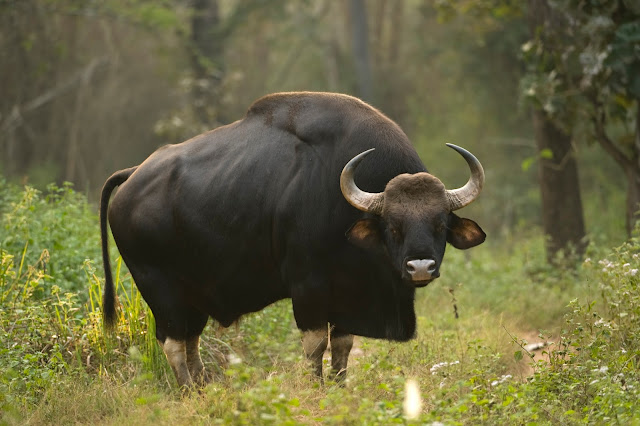Nilgiri Marten - Only species of marten found in India
Now take safari of South Indian Species - Nilgiri Marten; another unknown animal of Western Ghats- India
What is Marten?
- Answer is : The marten looks like a cuter version of the weasel with a long, wide tail. These creatures originate from the weasel (Mustelid) family of carnivores, with a long body, short legs and a long tail.
Introduction Part
- The Nilgiri Marten ( Martes gwatkinsi) is the only species of marten found in the southern India.
- It occurs in the hills of the Nilgiris and parts of the Western Ghats. The Kannada name is "Neer Naai".
Physical Characteristics
- The Nilgiri Marten is similar to the yellow-throated marten, but is larger and essentially different in the structure of the skull.
- It has a prominent frontal concavity. It is an unmistakable in the field.
- Its pelage is deep brown from head to rump, with the forequarters being almost reddish, with a bright throat ranging in colour from yellow to orange.
- It is about 55 to 65 cm long from the head to vent and has a tail of 40 to 45 cm.
- It weights about 2.1 kg.
- The marten is an expert burrower, swimmer and tree climber.
Distribution
- The species is reported from the Nilgiris, parts of Southern Kodagu and Travancore Kerala, upto the Charmadi Ghats.
Foods and Reproduction
- The marten spends its day seeking out squirrels as a prey and living in a trees.
- When it is not doing either, it eats insects, nuts and fruits.
- It lives in a hollow tree throughout the entire year.
- It produces offspring in April, with a litter of about two to four babies.
- At birth, the marten is blind, and doesn't open its eyes till the sixth week. Not till three months do they attain adult weight.
Conservation
- Nilgiri Marten is listed in Schedule II part II of the Indian Wildlife (Protection) Act, 1972 and has been placed on Appendix III of CITES by India.
- This species occurs in many protected areas and Reserved Forests.
Facts
- As per the information available; number of mature individuals is around 1000.
- Their current population trend is stable ( less declination or incrimination in population )





Comments
Post a Comment